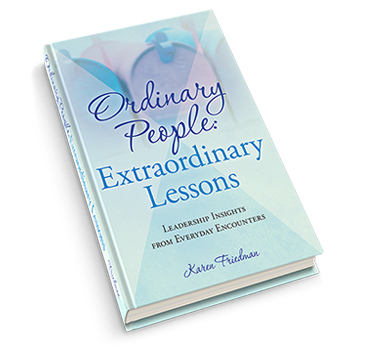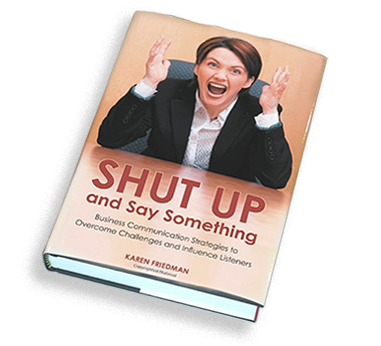It was 8:00 in the evening and I was presenting to healthcare specialists who had flown in from various locations across the country to attend a medical meeting. My task was to teach them how to present complex scientific information to other healthcare experts in an efficient and engaging way. Given many had been flying for hours from different time zones and were now eating and sipping cocktails, even if I was terribly engaging, I wondered how engaged they would be. I decided a good place to start would be at the beginning as that’s typically where many speakers lose their audience by reading the agenda slide.
After a brief ice breaker to set the stage, I presented two options for opening a talk about a newly approved cancer drug that extended survival rates. First, I read their agenda word for word. Eyes glazed over. Second, I woke them up by asking a thought-provoking question related to their practices, then paused and emphasized key findings that had never been achieved before. Their heads nodded in approval.
Then I asked the group, what do you think of that?
As the room collectively nodded their heads in approval, suddenly a leading researcher in the front row stood up and said, “I think it’s boring”.
I had two choices. I could ask her why, but then I risked she would try to take over the meeting. Or, I could I could disagree which would challenge her credibility and alienate her. It was clear she wanted the floor and wanted to be heard. So, I gave it to her, but did so in a way that made her feel valued.
I invited her to stand up and show us how she might have presented opening remarks. She was quite pleased to do so and did a nice job. I complimented her in front of everyone and explained that there are multiple ways to deliver opening remarks as opposed to a one-size-fits all approach.
Most importantly, I used the opportunity to explain that the beginning of a talk is the best opportunity to command attention and that’s why it’s so important to say something meaningful. In scientific presentations, it may be defining the scope of your work or stating key findings that you will elaborate on later. Either way, you must help listeners understand how it affects or benefits them and you must do it efficiently, so they know why they should listen to you.
The researcher who challenged me did this very effectively. She started by stating a common problem everyone in her audience shared. She quickly highlighted key findings to illustrate how outcomes might be different. Then, instead of reading the agenda, she explained the objectives of the talk. Right away, the audience was engaged and understood why the information was relevant to them.
In more than two decades of experience coaching speakers, I have found that even the most seasoned experts misread their audiences. Because they are speaking to peers, they assume their listeners know what they know. That’s a huge mistake because if you present information at a level too complex for some to understand, you will quickly lose that part of your audience.
The disconnect of scientific and many presentations is the lack of conversation. You may be wondering; how can I have a conversation if I’m presenting? I challenge you to change your thought process. Stop thinking of your presentation as giving a talk and start thinking of it as having a message-focused conversation.
Yet so many technical presenters think of slides as their script. They follow their slides, sometimes word for word, instead of letting the slide follow them. Imagine if Abraham Lincoln had delivered the Gettysburg address in a PowerPoint presentation. Or what if Martin Luther King relied on slides when he gave his powerful ‘I Have a Dream’ speech. If you think that’s not the same as an academic or scientific speech, perhaps you should reconsider.
Albert Einstein once said, “if you can’t explain it simply, you don’t understand it well enough.”
The next time you have to give a talk, ask yourself this question. If your slides crashed, could you still deliver the information? True, you may leave some things out and not be able to show all of the data, but if you can still provide the key facts, then yes you can because you know your subject.
To accomplish this, try practicing with the slides and then again without the slides. With slides, you begin to internalize the information. Without slides, you will be much more conversational as if you’re speaking to a neighbor.
Slides are often text heavy and written in sentences that appear in small fonts. That means the slide is designed for you and not for your audience. Fonts should be big, so your audience can see the words. Text should be minimal to prevent listeners from reading. If people are trying to read the slide, then they are not giving you their full attention. Strive for your slides to follow you and reinforce what you’re saying. You should not follow the slide.
Here are some additional tips to keep your audience engaged.
What’s the story?
If the fire alarm went off in the room and listeners could only hear one thing, what would that be? Write it down. That will help you shape the story and key message you want to deliver.
Want vs. need
There is a difference between everything you want to tell them and what they really need to know. Focus on their needs to create more efficient, engaging talks that are easy to understand.
Two sets of slides
In a perfect world, you should create two sets of slides. Set one includes all the detail and is available to those who want it. Set two is more minimal and what you project when presenting. It’s your job to make sense of information. If people can get what they need by reading your slides, why do they need you?
A picture is worth a thousand words
Look for ways to turn sentences into phrases and 12-point font packed tables into visuals such as pie charts and bar graphs. Highlight key findings to help people understand what’s important.
Practice out-loud
No matter how many times you’ve delivered your talk or how well versed you are in the subject, winging it is not an option. The more you practice out-loud, the smoother and more confident you’ll be on game day. You can also tape yourself which will help you hear where you need more inflection, pausing and vocal variety.
Remember, communicating is about connecting. If you fail to connect, you fail to engage. If you don’t engage, no one is really listening.








Leave a Reply
You must be logged in to post a comment.